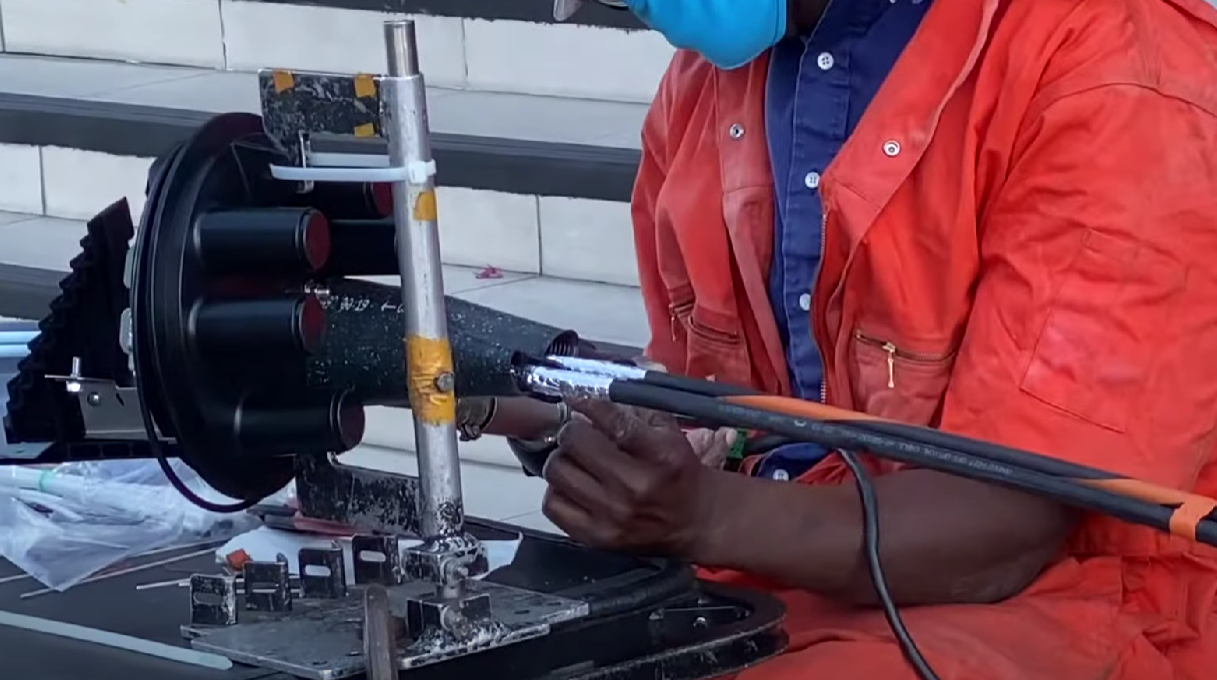Running fiber optic cable can provide high-speed and reliable connectivity, making it a popular choice for businesses and individuals alike. The cost of installing fiber optic cable can vary depending on factors such as distance, location, and complexity.
We will explore the average costs involved in running fiber optic cable and factors to consider when planning a fiber optic installation.
How Much Does It Cost to Run Fiber Optic Cables?
The cost of installing fiber optic cable varies based on factors like fiber count, making it challenging to provide an exact price. On average, the installation cost ranges from $1 to $6 per foot. To illustrate, for a building requiring 100 to 200 drops, the estimated cost would be around $15,000 to $30,000.
While the upfront investment in fiber optic cabling is slightly higher compared to copper, its superior capacity and reliability can lead to long-term cost savings. Fiber optic technology offers greater bandwidth and durability, making it an advantageous choice in terms of performance and overall expenses.
What is a Fiber Optic Cable?
A fiber optic cable is a kind of high-speed communication cable that consists of one or more thin strands of glass or plastic fibers.

These fibers transmit data in the form of light signals over long distances. Each fiber is incredibly thin, often less than human hair, and is surrounded by a protective coating called a cladding.
The core of the fiber is designed to guide light signals, ensuring minimal signal loss and maintaining high data transmission rates. Fiber optic cables offer numerous advantages over traditional copper cables, including faster data transfer speeds, higher bandwidth capacity, immunity to electromagnetic interference, and longer transmission distances.
They are widely used in telecommunications, internet connectivity, data centers, and various other applications that require high-speed and reliable communication.
Factors That Affect the Overall Cost of Running a Fiber Optic Cable
When planning to run fiber optic cable, several factors come into play that can directly influence the overall cost of the installation. Understanding these key elements is crucial for budgeting and making informed decisions. Below are the primary factors that can impact the cost of running fiber optic cables.
Distance
The distance between the starting point and the endpoint of the fiber optic cable is a significant determinant of the overall cost. Longer distances require more cable, which increases material costs. Additionally, the installation process becomes more labor-intensive and time-consuming.

Specialized equipment may be necessary for laying and connecting the fiber optic cable over extended distances, further contributing to the overall expense.
Fiber Count and Type
The number of fibers within the cable, known as the fiber count, directly affects the cost. Cables with a higher fiber count typically incur more significant expenses due to the increased amount of materials required. Additionally, the type of fiber used can impact the overall cost.
Single-mode fiber, designed for long-distance transmissions, is generally more expensive than multimode fiber, which is suitable for shorter distances.
Complexity of Installation
The complexity of the installation plays a significant role in determining the cost of running fiber optic cable. Factors such as the environment, accessibility, and existing infrastructure can affect the difficulty and time required for installation.
For example, installations in rugged terrains, densely populated areas, or existing buildings with limited cable pathways may require additional resources, equipment, and expertise, resulting in higher costs.

Labor and Equipment
The labor and equipment involved in the installation process contribute substantially to the overall cost. Skilled technicians with expertise in fiber optic cable installation are required to ensure the proper handling and connection of the cables.
The availability and hourly rates of qualified professionals can vary by location, affecting the overall labor costs. Additionally, specialized equipment such as fusion splicers, cable blowing machines, and cable testers may be necessary, adding to the expenses.
Permits and Regulations
Obtaining permits and adhering to local regulations can impact the cost of running fiber optic cable. Depending on the jurisdiction, there may be fees associated with permits [1] and inspections.
Compliance with safety and environmental regulations may require additional measures and materials, potentially increasing the overall expenses.
Conclusion
The cost of running fiber optic cable can vary depending on factors such as distance, fiber count, the complexity of installation, labor and equipment, and permits and regulations.
By considering these factors and planning accordingly, individuals and businesses can make informed decisions and accurately budget for the installation of fiber optic cable, optimizing their investment in high-speed and reliable connectivity.

